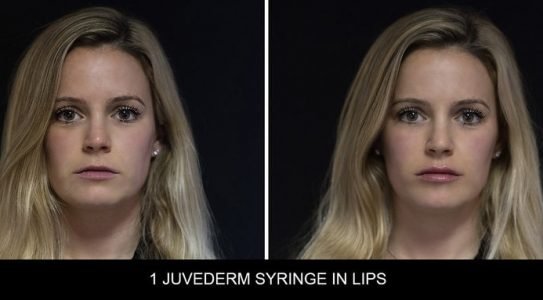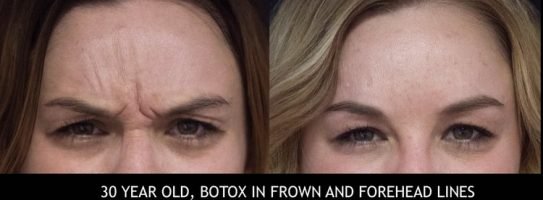When it comes to non-surgical aesthetic treatments, Botox and dermal fillers are two of the most popular options. Both procedures offer effective results in enhancing your facial appearance, but they work in very different ways. Understanding the key differences between Botox and dermal fillers is essential to making an informed choice.
In this article, we’ll compare the two treatments, help you decide which one is right for you, and take a look at the results our clients have achieved.
Key Differences Between Botox and Dermal Fillers
Both Botox and dermal fillers are effective ways to reduce signs of aging, but they address different concerns. To make an informed decision, it’s important to understand how each treatment works and the specific benefits they offer.
Composition and How They Work
Botox (botulinum toxin) works by temporarily relaxing the muscles responsible for causing wrinkles. It’s particularly effective for dynamic wrinkles—those caused by facial movements, such as crow’s feet, frown lines, and forehead creases. When injected into the targeted muscles, Botox blocks nerve signals, preventing the muscle from contracting. This results in smoother skin and a more youthful appearance.
In contrast, dermal fillers are gel-like substances made from various materials, such as hyaluronic acid, calcium hydroxylapatite, or poly-L-lactic acid. They are injected beneath the skin to restore lost volume, smooth out deep wrinkles, and enhance facial contours. Dermal fillers are ideal for static wrinkles, which are visible even when the face is at rest, as well as for plumping areas such as the cheeks, lips, and under-eye hollows.
Treatment Areas
Botox is primarily used to treat the upper third of the face. The most common areas are:
- Forehead lines
- Crow’s feet (lines around the eyes)
- Frown lines (between the eyebrows)
It’s not used for volume loss or for treating deeper wrinkles caused by aging.
Dermal fillers, on the other hand, are used to restore volume and fill in deeper wrinkles or folds. Common treatment areas for fillers include:
- Nasolabial folds (smile lines)
- Marionette lines (lines from the mouth to the chin)
- Cheeks
- Lips
- Tear troughs (under-eye hollows)

Some dermal fillers, like Juvederm, are specifically designed for facial volume restoration and soft tissue enhancement.
Duration of Results
One of the significant differences between Botox and dermal fillers is the longevity of the results. Botox typically lasts 3 to 4 months before the effects begin to wear off, as the muscle activity gradually returns. If you want to maintain the results, follow-up treatments are needed.
Dermal fillers, on the other hand, last much longer, with results ranging from 6 months to 2 years, depending on the type of filler used and the area treated.
Factors to Consider When Choosing Your Aesthetic Treatment
Desired Outcome
If your primary concern is dynamic wrinkles, such as those caused by repeated facial movements, Botox may be the ideal option. It’s also an excellent choice for individuals who want to smooth lines around the eyes or forehead without adding volume.
If you’re looking to restore lost volume or fill in deeper wrinkles and folds, dermal fillers are likely a better choice.
Age and Skin Condition
Younger patients may find that Botox is a good preventive treatment to maintain smooth skin and delay the onset of wrinkles.

For older patients, dermal fillers may be more appropriate to address the visible volume loss that naturally occurs with aging.

Also, individuals with thinner skin or significant volume loss may benefit more from fillers, while those with more active facial expressions may opt for Botox to manage expression lines.
Budget and Frequency of Treatments
The cost of Botox and dermal fillers can vary significantly depending on the treatment area and the number of units or syringes required. While Botox is generally more affordable upfront, it needs to be repeated every 3 to 4 months. Dermal fillers, though more expensive initially, last longer, which might make them a more cost-effective option in the long run.
Results From Our Clients in Portsmouth, NH and the Seacoast Region
At Ballentyne Medical Aesthetics, clients have seen fantastic results with both Botox and dermal fillers.
Before and After Photos
Our clients’ results speak for themselves, whether they smooth out crows’ feet, reduce forehead lines, or enhance cheek volume. The before and after photos demonstrate the transformative power of Botox and dermal fillers.

Patients consistently report feeling more confident and youthful after their treatments. The key is understanding which treatment will best meet your unique aesthetic needs, whether you’re addressing wrinkles, volume loss, or both.
In conclusion, both Botox and dermal fillers have their place in aesthetic treatments. The decision between Botox and dermal fillers ultimately comes down to your specific goals, age, and the areas you want to treat.
To determine the right treatment plan for you, schedule a consultation with us today.



